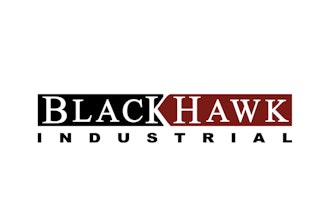Building Critical Thinking Skills to Enhance Employee Comprehension and Decision Making
Stevens Point, WI - In employee led groups or in an individual context, individuals can begin to take over the responsibility of using questions to help foster a deeper understanding of material, information, key concepts or issues.
Through the use of questioning, employees engage in a social process that is fundamental to learning. Individual learning and self-development begin on the social plane, through interactions where employees think and respond with others who possess varied levels of knowledge. Employees should take an active role in exploring, finding and researching answers to their own questions.
Through self-inquiry based questioning, individuals develop questions that need to be answered and then research the answers to support their thinking and responses. Inquiry is not always a specific question, but can be simply a contemplation about something that needs to be investigated further. There is usually not one correct answer to meaningful questions of inquiry, but through the process, employees actually gain understanding, generate more questions to ponder, and find further issues to research. This technique helps provide a structure for looking through information and sorting out relevant from irrelevant facts, sources and data.
Within the process, it is important to eliminate incorrect information, confirm reliable information, and ask further questions about the meanings and implications of certain words and phrases. After the discussion, they review and confirm the accuracy of summarizations and understandings.
Questions have the ability to buttress comprehension. Their intended use is to make the sharing of new information a collaborative process, with shared responsibilities for ongoing discussions and conversations as well as problem solving outcomes.
Within the questioning process, it is essential for employees to invite questions that effectively probe for understanding. One effective method is to apply "why" types of questions that tend to redirect an individual's attention. An example is, "Why are you sure that when you say ____ will happen, it will?" It is also important for employees to ask questions that model comprehension monitoring, "Does (this) or (that) make any sense to you?"
POSSE Questioning
POSSE questioning is an effective framework to guide employees to facilitate better comprehension, particularly when solving problems. POSSE stands for:
· Predict (predict what will happen as a result of the problem);
· Organize (organize knowledge and ideas into categories and details);
· Search (read to identify key ideas and details of problem-related parts);
· Summarize (identifying the main problem rather than its symptoms);
· Evaluate (ask a question, compare, clarify and predict).
Within the POSSE framework, questioning tends to be embedded in the Predicting, Searching, and Evaluating stages of problem solving and is structured in a "Shared Inquiry Discussion" format that is designed to promote creative, thoughtful and critical thinking. As such, the leader continues to play a key role in the inquiry process. Within this framework, however, he or she avoids asking employees' questions that tend to cause them to speculate about something that is outside immediate, contextual boundaries. He or she also avoids questions that tend to require making predictions about something.
Applying the POSSE Framework to Make Questioning Visible
How can employees become proficient in using questions effectively in their own problem solving/work-related situations? There are two major challenges associated with this question. First, while widely existing in any workplace, questions are so common that employees tend to simply take the process for granted, rather than analyzing how the process of questioning works. Which is, how questions are formed, the purposes they serve and the information sources they probe. Second, even when the questioning process is discussed and detailed to make it "visible," employees still need opportunities to engage in active questioning practices themselves. The goal of the questioning process should be to increase and enhance proficiency in seeking out information and to generate higher levels of insight and understanding.
There are specific ways in which to practice the skill of questioning for reaching this goal:
Think Aloud Sessions
A "Think Aloud Session" is one way to make a relatively common or invisible process like questioning to identify important information more visible by allowing employees to share insights, reasoning and perceptions through the art of inquiry and the language of questioning to generate positive results. When a leader applies Think Aloud Sessions, they should model or demonstrate "Questioning Use Strategies," and the vocabulary of "Question-Answer Relationships" (see below).
Creating Question-Answer Relationships (QAR)
A Question-Answer Relationship is an effective questioning strategy, which emphasizes that a relationship exists between certain questions asked, the material presented, and the background of the responders. In this strategy, employees need to rely on four question/answer relationships or descriptors to find the information they need in order to effectively answer the question(s) being asked.
Question-Answer Relationships help employees and the leader develop a shared, common language for discussing and understanding how particular questions are designed to function. The leader may need to introduce QAR and to explain the four types of question/answer relationships that it encompasses:
Consider and Explore - The answer exists, but employees need to put together different pieces of information to obtain it. This is the most common QAR.
Right Here - The answer resides within the question and is usually easy to comprehend. The information is found without much effort.
Question Asker and Me - The answer is not explicitly stated. Employees need to think about what they already know, what the leader tells them, and how both pieces of information fit together in a meaningful way.
On Your Own - The answer is not physically given or implied. Employees should be able to answer the question without reading or researching information, simply by using their own experiences and background knowledge.
QAR Brings Together Knowledge and Information
This is information and knowledge that employees need to draw upon in order to answer particular questions, through various inquiry strategies. For example, a question asked could require a response that is part of the respondent's background knowledge, or an "In My Head" response. In contrast, another particular question may require a response that needs to be obtained from past readings about something in particular.
Asking a question such as, "Have you ever been surprised when our production line shuts down?" cannot simply be addressed with information from reading something, even if what was read about tends to describe a situation like the one being asked. Further, a question like, "What might we do if and when the production line breaks down?" requires both an understanding of the dilemma and the ability to draw on one's own background to solve the problem in a new way. To gain a better understanding for how the QAR relationship works, and why it is important, the process should be focused on question asking and answering within workplace contexts and their activities.
Excerpt: Effective Questioning in the Workplace: Pinpoint Leadership Skill Development Training Series (Majorium Business Press) $ 19.95 USD
If you would like to learn more about teaching and transferring effective questioning techniques in the workplace, refer to Effective Questioning in the Workplace: Pinpoint Leadership Skill Development Training Series . This training skill-pack features eight key interrelated concepts, each with their own discussion points and training activity. It is ideal as an informal training tool for coaching or personal development. It can also be used as a handbook and guide for group training discussions. Click here to learn more.
Use promo code XC9OTF47 to receive 10% discount on this book.
Building Critical Thinking Skills To Enhance Comprehension
Questions have the ability to buttress comprehension. Their intended use is to make the sharing of new information a collaborative process . . .
Apr 26, 2012
Latest in Home
BlackHawk Adds McNutt as Northeast Region GM
September 16, 2025
Ferguson Reports Strong Results to Finish '25
September 16, 2025
Wesco Invests $10M in Procurement Software Startup
September 15, 2025


















